The New Testament includes two genealogies of Jesus of Nazareth, one in Matthew 1:1-17, and another in Luke 3:23-38. Although the modern reader may find these lists of names less than scintillating, they are in fact supremely important to the argument of the New Testament concerning the person and claims of Jesus. These seemingly archaic and technical passages deserve careful study.
THE GENEALOGY OF JESUS IN THE GOSPEL OF MATTHEW
The purpose of Matthew’s genealogy
Matthew penned his gospel in order to demonstrate that Jesus of Nazareth is indeed the long-awaited Messiah of Israel. To the Jewish mind, one question would have to be answered before such a proposition could be pursued any further: “Is this Jesus a descendant of the house of David?” Thus Matthew begins his telling of Jesus’ life with the bold affirmation: “The book of the genealogy of Jesus Christ, the son of David, the son of Abraham” (1:1).
This is where any claim to Messianic identity must begin. Yahweh had cut a covenant in which He had promised David, “your house and your kingdom shall endure before Me forever; your throne shall be established forever” (2 Samuel 7:6, KJV). For generations, Israel had rejoiced in the hope that God had promised to “build up [David’s] throne to all generations” (Psalm 89:4); indeed, they had been taught that as they ascended toward the temple to worship they should remember that promise, singing with the psalmist, “The LORD hath sworn in truth unto David; He will not turn from it; of the fruit of thy body will I set upon thy throne” (Psalm 132:11).
In short, the hope of Messiah animated the Jewish soul, but that Messiah must be the son of David, and as such “the son of Abraham.” The issue of descent from these two great fountains of Jewish identity and hope is paramount.
Distinctives of Matthew’s genealogy
Though in many ways a standard Hebrew genealogy, this passage is peculiar on at least two counts. First, it is arranged symmetrically; three sections of fourteen generations each. This rather artificial structure is clearly intended as “an easy help to the memory.”1 But in order to achieve this symmetry, Matthew counts one name twice (Jehoiachin), while omitting others–most clearly the three generations of kings after J[eh]oram (Ahaziah, Joash, and Amaziah, compare 1 Chronicles 3:10-12). Perhaps Matthew omitted these because they were the most immediate descendants of Ahab and Jezebel!
At any rate, such omission does not compromise the integrity of the genealogy; such a list is intended to demonstrate descent, not to be an exhaustive listing of names. Further, the verb used throughout the list (translated “begat” in the KJV) more literally means “was the ancestor of.” Matthew has determined to demonstrate that Jesus does fulfill the first test of a Messianic claimant (descent from David), and to do so in a way that could be easily memorized. Indeed, some have argued that the number fourteen was suggested by the numerical equivalent of David’s name (D:4 + V:6 + D:4 = 14). Although it is impossible to be certain that this was Matthew’s rationale (and other explanations have been suggested), the idea is intriguing as it places David even more dramatically at the heart of this genealogy.
Second, Matthew’s genealogy is unusual in that it references four Old Testament women–Tamar, Rahab, Ruth, and Bathsheba (though not by name). The Gospelist seems to regard those four as anticipating Mary on two counts: 1) each of these women “showed initiative . . . and so came to be considered the instrument of God’s providence” in bringing forth the Messiah2; and 2) there was something unusual about each woman’s relationship to her husband–a narrative element which was irregular or even scandalous, but necessary to perpetuate the line of Messiah. Thus did these women foreshadow Mary, who responded in humble but anxious faith to the angelic announcement, and who nobly endured the malicious rumors concerning the birth of her first Son.
THE GENEALOGY OF JESUS IN THE GOSPEL OF LUKE
The purpose of Luke’s genealogy
Luke penned his gospel for a Greek audience. His concern was to demonstrate the genuine humanity of Jesus, to establish for his readers the truth of Jesus’ claim to be the “Son of Man.” Therefore his genealogy traces the lineage of Jesus not only to David (3:31) and Abraham (3:34), but all the way back to “Adam, the son of God” (3:38). This is unusual, but by this means Luke’s proves that Jesus is truly man, and thus that “the Messiah belongs not to Israel alone, but to the whole world of sinners.”3
Distinctives of Luke’s genealogy
Luke’s genealogy is almost startling in that he inverts the standard order, beginning with Jesus and working backwards in time to Adam. Official registers list persons as they are born, and thus descend in time from earlier to later generations. This is clear indication that Luke’s genealogy is his own work, drawn from public documents, but crafted to place emphasis on the individual at the beginning of the list, Jesus. Again, Luke places his genealogy at the beginning of Christ’s ministry, rather than at the beginning of the Gospel. Not until the Messiah has been anointed by the Spirit (3:22) does the drama of Messiah’s ministry commence, and this is Luke’s focus (compare Moses’ pedigree, recorded not in connection with his birth, but at the beginning of his public ministry, in Exodus 6:14-37).
A word needs to be said in defense of the historical veracity of the genealogies of both Matthew and Luke. The fourth century historian Eusebius states that the genealogies of distinguished Jews were burned in the time of Herod in order to hide the “base origins” of that monarch,4 and some have argued on that basis that there were no records extant in the days of Jesus. But Josephus, a late contemporary of Jesus, says nothing of such destruction, and he publishes his own genealogy. Further, the “taxing” of Luke 2:2 would have been unfeasible if there were no public records. Finally, if the genealogies were not accurate, or even if their accuracy was unverifiable in the first century, they certainly would have been attacked early on by unbelievers. Those unbelievers knew that if Jesus’ claim to Davidic and/or Abrahamic ancestry could be disproved, He would be demonstrated to be just another false Messiah. But no such attempt at discrediting the genealogies appears. This is powerful testimony to the demonstrable veracity of these documents.
RECONCILING THE TWO GENEALOGIES
Reconciling the genealogies is especially difficult at one point: they are very much distinct from David to Christ, and yet they both seem to trace the line of Jesus’ adopted father, Joseph (compare Matthew 1:16, “to Jacob was born Joseph,” and Luke 3:23, “Joseph, the son of Eli”). Bible believers have suggested two basic approaches to solving this dilemma. The first is to posit that both genealogies do trace Joseph’s line, but that one follows his physical ancestry, while the other records his legal lineage. The earliest proponent of this approach is Eusebius, who observes that even in the fourth century there were many uninformed opinions as to how to deal with this apparent conflict. He argues that Joseph’s mother had been widowed without children, had married a brother of her deceased husband (levirate marriage, Deuteronomy 25:5-6), and then had borne Joseph by that second husband. Thus, Joseph was the legal son of Eli (the first husband), but the natural son of Jacob (his mother’s second husband). This explanation is possible, but it rests on the hypothesis of a levirate marriage and it leaves some important questions unanswered.
A much stronger case can be made for the approach that acknowledges Matthew’s genealogy as that of Joseph, but argues that in Luke we have the genealogy of Jesus’ physical mother, Mary. Three points are telling in defense of this approach. First, the name “Joseph” in Luke 3:23 is the only name in the list without the definite article. (Each name In Matthew’s genealogy also has the article.) This is compelling evidence that this name ought not be read as part of Luke’s genealogical list; rather, it is part of the parenthetical statement inserted in that verse. Thus, the verse should read, “Jesus Himself . . . being the son (as was supposed of Joseph) of Eli.”5 It is not Joseph who is “the son of Eli,” but Jesus. Eli is best identified as the father of Mary. Luke is dealing resourcefully with a dilemma arising from the fact of Jesus’ virgin birth. Descent was not to be traced through a man’s mother, but through his father. But by reason of His supernatural conception in the womb of a virgin, Jesus had no physical father. Thus, His physical genealogy had to be traced through his nearest male relative, His maternal grandfather. The name of that man was evidently Eli, as recorded in Luke 3:23.
Second, Luke has already given significant attention to Mary in the first two chapters of his Gospel (1:26-35; 2:19, 51) –this in contrast to Matthew’s nativity narrative, which mentions Mary only as the wife of Joseph. Given Luke’s focus on Mary in his telling of the nativity, it is plausible to suggest that the genealogy he inserts after that narrative is in fact that of Mary.
Finally, there are two remarkably important ramifications to this understanding of the genealogies. The first relates to Jesus’ two-fold qualification to sit on the throne of David. On the one hand, Solomon was the son of David to whom the throne had been promised (2 Samuel 12:25), and thus the legal authority to occupy that throne must descend through him. Because Jesus’ adopted father, Joseph, traced his lineage to David through Solomon, Jesus inherited that prerogative (Matthew 1:17). On the other hand, God had promised in the Davidic covenant that no one who was not of David’s seed–his physical descendant–would ever sit on that throne (Psalm 89:4). Luke twice intimates Mary’s descent from David: first in the words of the angel to Mary (1:32), and again in recording that Mary went to register in the city of David (2:5). But if Luke’s genealogy is not that of Mary, there is no explicit biblical affirmation that Jesus is physically a descendant of David. Given the central place of the Davidic covenant in the fabric of Messianic expectation woven in the Old Testament, it is certainly reasonable to expect just such an affirmation–indeed, to find it in the genealogy recorded by Luke.
The second ramification relates to Jeconiah, a king who is identified by Matthew as an ancestor of Joseph (1:11-12). Jeremiah pronounced a curse upon Jeconiah, proclaiming that “no man of [Jeconiah’s] seed shall prosper, sitting upon the throne of David, and ruling any more in Judah” (22:30). By reason of that curse, the line of David from which Joseph descended was disqualified to sit on that throne. Had Jesus been the physical son of Joseph, He would have inherited that curse. However, He was not the physical son of David through Joseph, but through Mary (compare the relative pronoun, “of whom,” in Matthew 1:16, which in the Greek is feminine singular). “Jesus, genuinely a son of David through Mary according to the flesh (cf. Rom 1:3), by reason of the virgin birth and nonparticipation in the seed of Joseph, qualifies to receive the title without coming under the curse.”6
And so, when properly understood, these genealogies–though uninteresting and perhaps even irrelevant at first blush–become a marvelous manifestation of “the depth of the riches both of the wisdom and knowledge of God” (Romans 11:33).
END NOTES
1 A. T. Robertson, Harmony of the Gospels, (New York: Harper & Row, 1922), p. 259.
2 Raymond E. Brown, The Birth of the Messiah (Garden City: Doubleday, 1977), p. 74
3 J. P. Van Oosterzee, Luke (Edinburgh: T. & T. Clark, 1878), 1:119.
4 Eusebius, Historia Ecclesiastica, I.7.
5 See Robertson, Harmony, p. 261.
6 S. Lewis Johnson, “The Genesis of Jesus,” in Bibliotheca Sacra, Oct 1965, p. 341.


